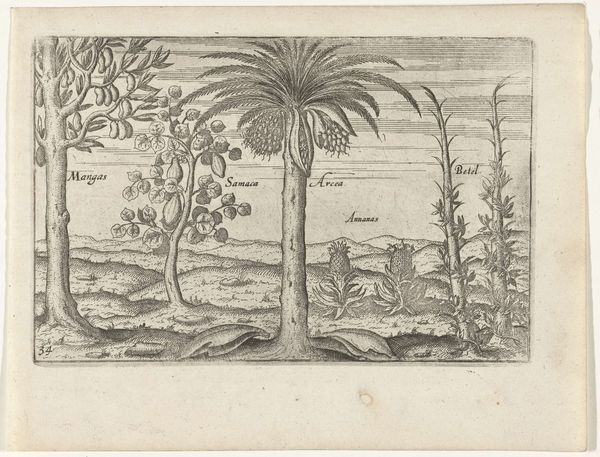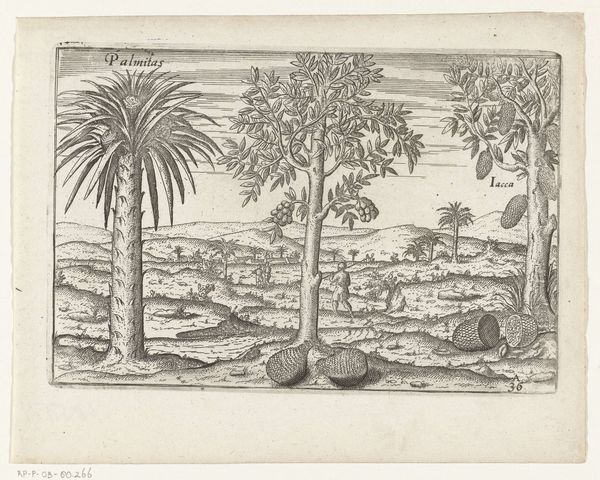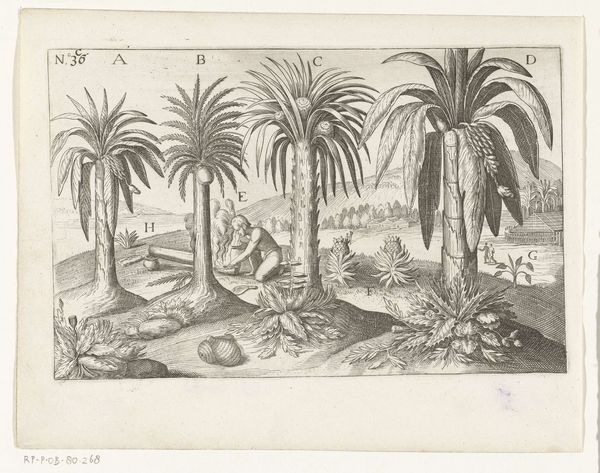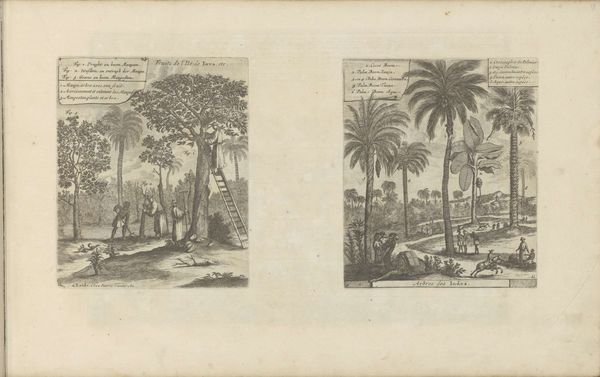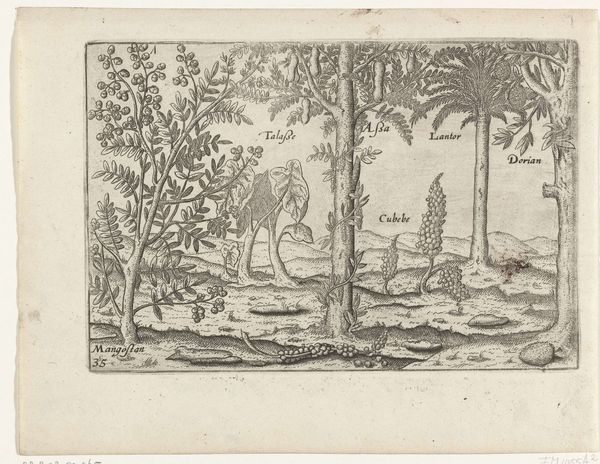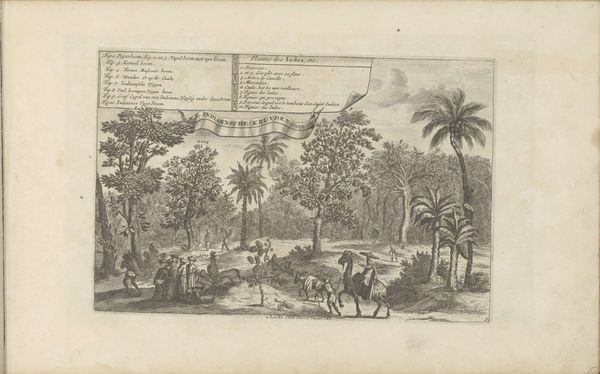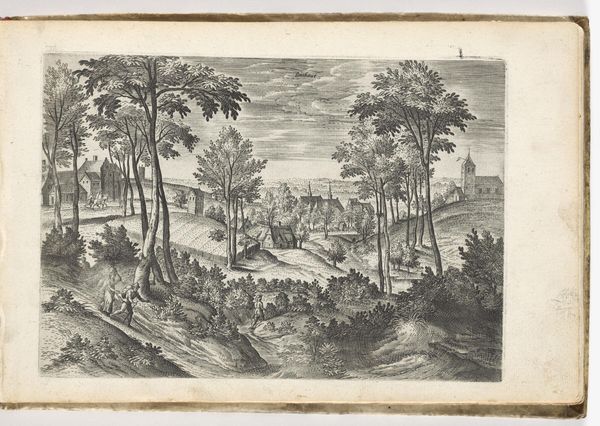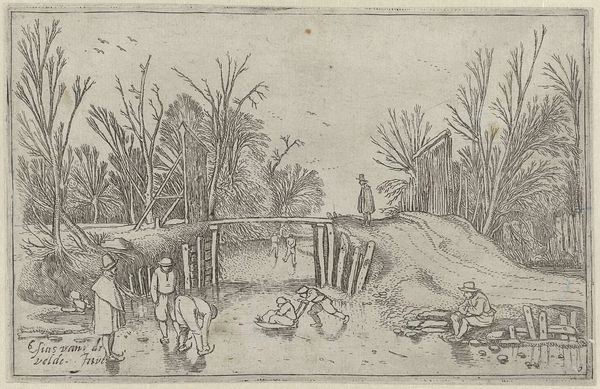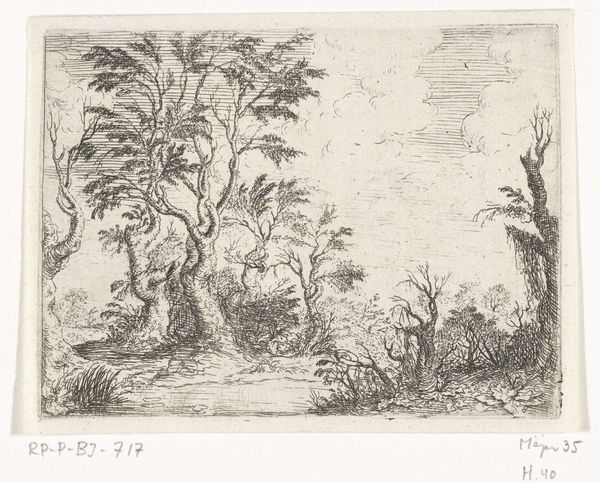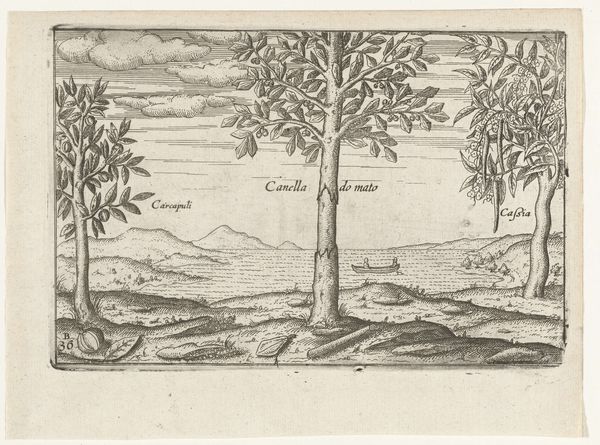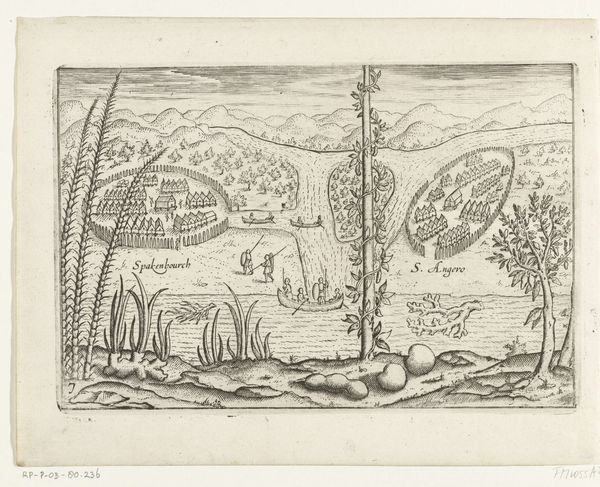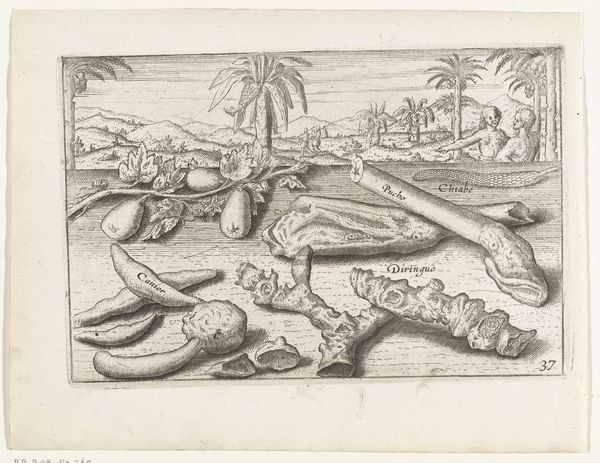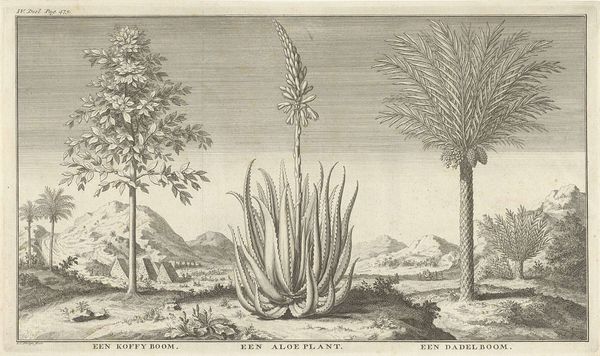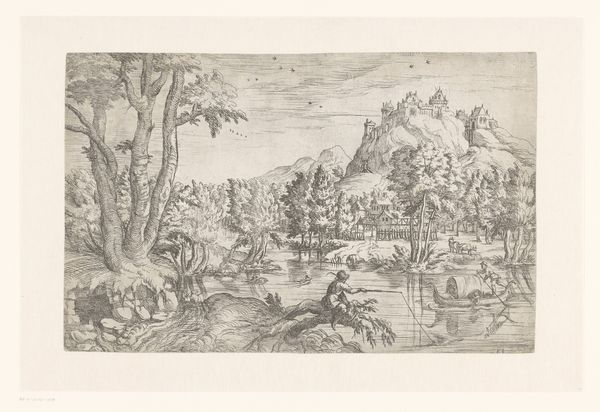
drawing, print, etching, ink, woodcut, engraving
#
drawing
#
toned paper
# print
#
pen sketch
#
etching
#
old engraving style
#
landscape
#
11_renaissance
#
personal sketchbook
#
ink
#
ink drawing experimentation
#
pen-ink sketch
#
woodcut
#
pen work
#
sketchbook drawing
#
storyboard and sketchbook work
#
northern-renaissance
#
sketchbook art
#
engraving
#
realism
Dimensions: height 145 mm, width 220 mm
Copyright: Rijks Museum: Open Domain
Curator: Let's discuss this intriguing etching titled "Inheemse gewassen van Sumatra," or "Native Plants of Sumatra," dating back to the period of 1597-1646. The artist is, as far as we know, anonymous, but the artwork is currently housed at the Rijksmuseum. Editor: Immediately, I'm struck by the somewhat surreal quality. The precise detail given to the plants clashes a bit with the almost cartoonish hut in the background. It evokes a sense of… a deliberate disconnect. Curator: Yes, it's easy to feel disoriented when considering how images like this participate in colonial power structures and the “discovery” and extraction of resources. Editor: You are so right. And there are visual clues in that direction. The palm on the right, “A”, has prominent, almost totemic nuts. And on the left we have “C”, the other plant seems crowded to the edges. The irises marked with “D”, seem deliberately placed, perhaps implying some kind of value. Curator: This piece definitely seems designed to showcase the resources of Sumatra to a European audience. Look at how the composition leads your eye—from the labeled flora toward that hut, implying settlement. The “native plants” are being presented as elements of trade and potential colonization. Editor: And what about the drawing's technique, the symbolism? It makes me think of the visual language developed to inventory newly ‘discovered’ lands. The plants meticulously rendered in a pseudo-scientific manner. The entire presentation seems focused on creating an image of the exotic, framed by Western ways of seeing. Curator: Precisely! This isn’t just a picture of plants; it’s a depiction shaped by cultural agendas and the visual codes of the time. The almost clinical rendering coexists uneasily with the hint of paradise or Eden… until you examine what lies underneath. Editor: Thinking about those roots—cultural, historical—definitely reframes the image for me. What initially felt naive becomes deliberately crafted. Curator: Exactly. I think exploring this artwork's history and impact gives us insight into a pivotal moment of early global exchange, when natural history and emerging forms of image culture influenced both science and power. Editor: Yes. It definitely invites you to explore layers beyond just the aesthetic appeal, revealing an intricate play of observation, appropriation, and, really, cultural encoding.
Comments
No comments
Be the first to comment and join the conversation on the ultimate creative platform.
